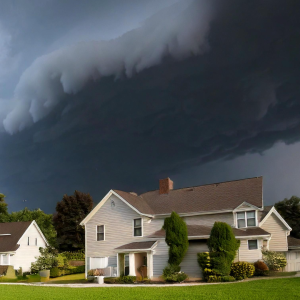
(630) 947-7980
Call to speak to an insurance expert.
Call to speak to an insurance expert.
Navigating the world of insurance is no small task, especially when you open your renewal notice only to find that your premiums have gone up—again. If you’re a homeowner or vehicle owner who has recently been on the receiving end of this unwelcome news, you’re not alone. Across the country, many are facing similar increases in their insurance costs. But why is this happening, and what can you do to mitigate these hikes? Trunnell Insurance Services offers insights and solutions, including obtaining quotes from up to 15 different insurers to find you a better rate.
Several factors contribute to the rising cost of insurance, each playing a part in nudging your premiums upward.
From wildfires and hurricanes to theft and accidents, an uptick in claims and the cost associated with natural disasters significantly affect insurance rates. Insurers need to adjust premiums to account for these increased risks and ensuring funds are available for future claims.
The cost to repair a home or vehicle has risen sharply due to increased prices for materials and labor. For automobiles, advanced technology has made even minor repairs more costly. For homes, shortages in building materials have driven up prices, which, in turn, affects the cost of claims and, subsequently, insurance premiums.
General inflation affects all sectors of the economy, and insurance is not exempt. As the cost of goods and services increases, so does the cost to insure them. This inflationary pressure applies to both the administrative side of managing insurance policies and the claims costs.
While it may feel like you’re at the mercy of these trends, there are several strategies you can employ to try and reduce your insurance premiums.
Don’t accept your renewal premium as the final word. Companies like Trunnell Insurance Services can compare quotes from up to 15 different insurers, potentially finding you a better rate. Shopping around and getting multiple quotes gives you leverage and can lead to significant savings.
Many insurance companies offer discounts if you bundle multiple policies, such as home and auto insurance. By consolidating your policies with one insurer, you can often unlock savings that wouldn’t be available if the policies were spread across different companies.
Choosing a higher deductible can lead to lower monthly premiums. If you’re in a financial position to cover a higher out-of-pocket cost in the event of a claim, this could be a lucrative option to reduce your overall insurance expenses.
Taking steps to reduce the risk of claims can also lower your premiums. For homeowners, this might mean installing security systems, smoke detectors, or weatherproofing your home. For drivers, safer driving records and the use of vehicles with advanced safety features can positively impact insurance rates.
Make sure you’re not over-insured. Reviewing your policy to ensure it accurately reflects your needs can uncover areas where you might be able to cut back on coverage and, thus, save on premiums.
Facing increased insurance premiums can be frustrating, but understanding the why behind these rises and knowing how you approach reducing your rates can empower you. Taking proactive steps, such as consulting with Trunnell Insurance Services to explore your options and compare rates, can make all the difference in managing your insurance costs effectively. Remember, in the world of insurance, knowledge is power—and savings.









How Trunnell Insurance Delivers Better Business Premiums in Illinois Request a Free Quote Finding the right insurance coverage is a critical component of running a successful business. Whether you’re a small business owner or managing a large corporation in Illinois, navigating the complex world of insurance can be daunting. From

Protect Your Fleet with Business Auto Policies from Trunnell Insurance Services Request a Free Quote For businesses that rely on a fleet of vehicles to operate, having the right insurance coverage isn’t just a good idea—it’s a necessity. Whether you’re based in Chicago, Naperville, or any of the surrounding areas,

A Guide to Understanding Water Damage Request a Free Quote Water damage, whether from a leaking faucet, a broken water heater, or a flood, is one of the most common and challenging issues homeowners face. If not addressed promptly, it can lead to costly repairs and even dangerous mold growth

Finding the Best Home and Auto Insurance in Plainfield, IL with Trunnell Insurance Services Request a Free Quote When it comes to protecting the life you’ve built in Plainfield, IL, choosing the right home and auto insurance is one of the most important steps you can take. But with so